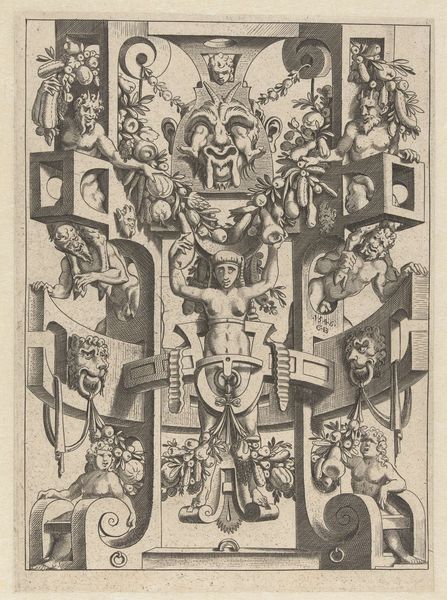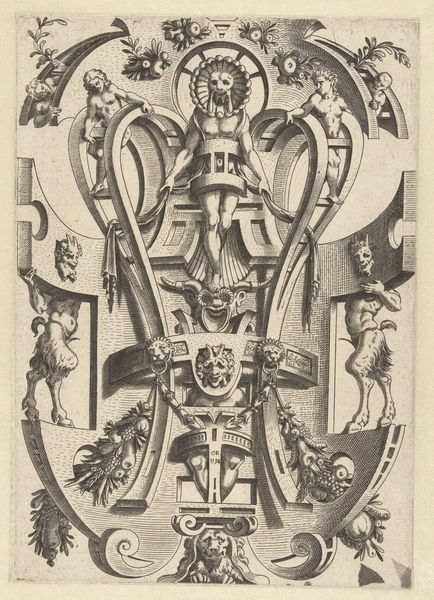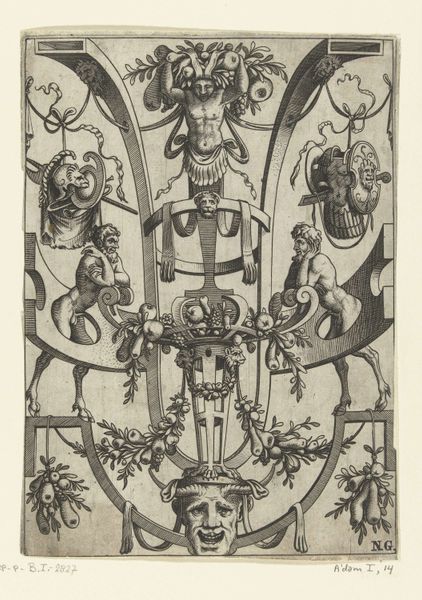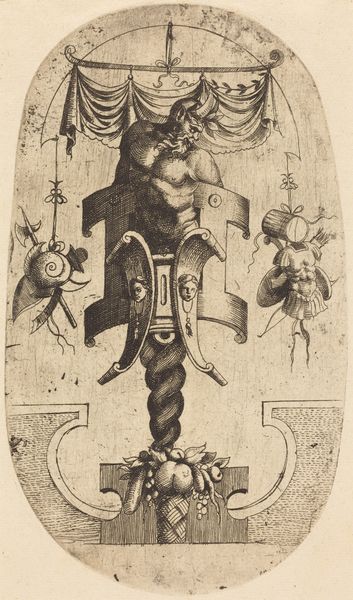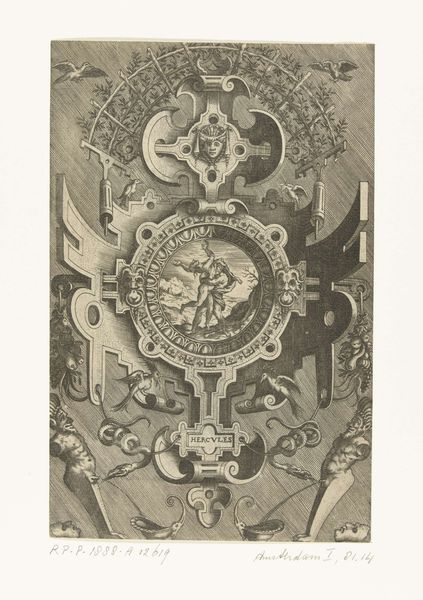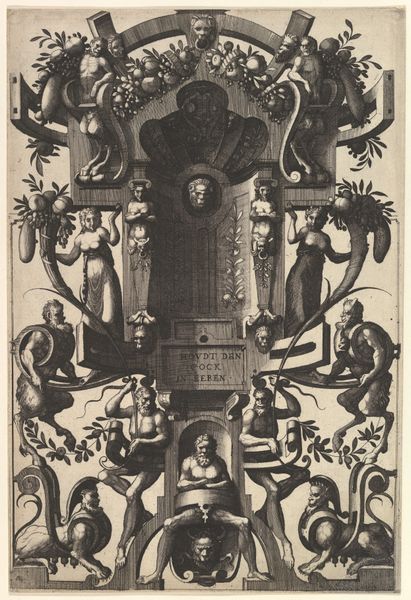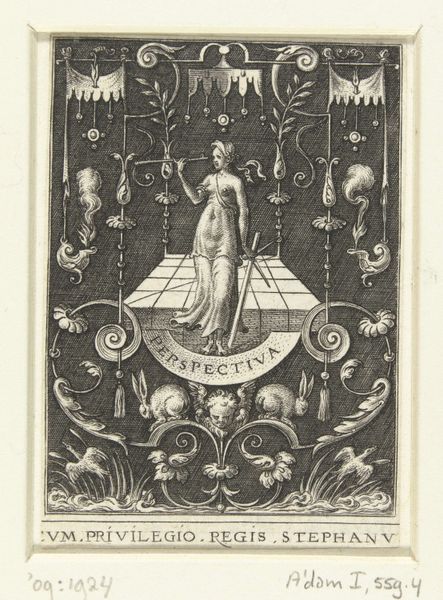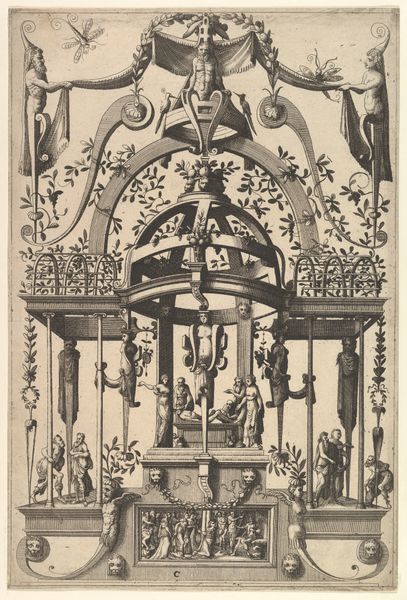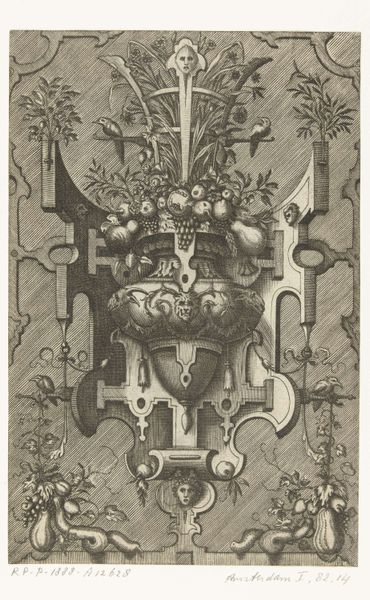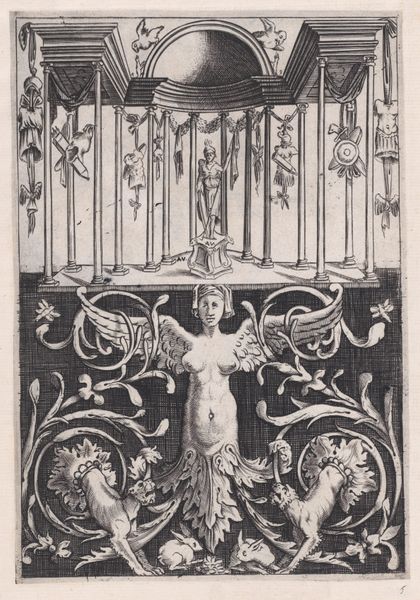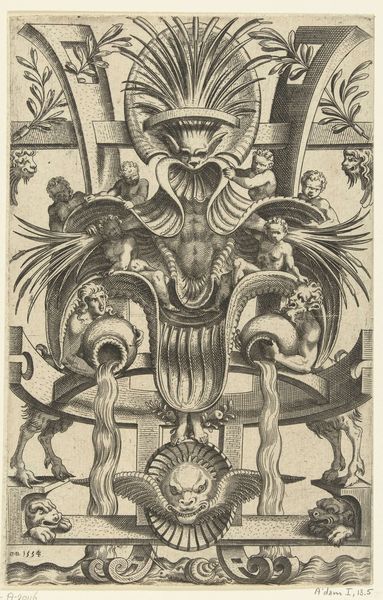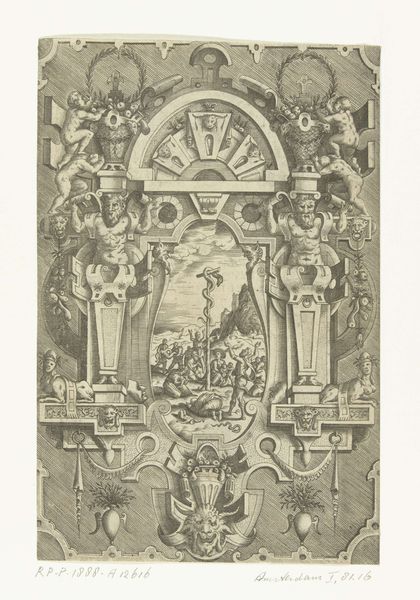
Cartouche met het hoofd van een vrouw die drie schelpen in haar haar draagt 1567
0:00
0:00
drawing, print, engraving
#
drawing
# print
#
old engraving style
#
figuration
#
11_renaissance
#
northern-renaissance
#
engraving
Dimensions: height 205 mm, width 139 mm
Copyright: Rijks Museum: Open Domain
Curator: Let’s turn our attention to this print, currently residing at the Rijksmuseum, entitled "Cartouche met het hoofd van een vrouw die drie schelpen in haar haar draagt." It’s an engraving by Pieter van der Heyden, dating back to 1567, a fascinating example of Northern Renaissance design. Editor: Oh, wow, intricate doesn’t even begin to describe it! It’s like a jewelry box exploded – all these little faces and decorative elements tumbling over each other. It almost feels claustrophobic, you know? In a strangely beautiful way. Curator: Precisely. The composition is a rich tapestry of Renaissance symbolism. We must consider the prevalence of cartouches at the time— framing devices literally meaning "scroll," here filled with culturally potent emblems of identity. Editor: So, that central female face… she’s not just some random portrait, right? Curator: Indeed. The three shells woven into her hair potentially allude to fertility or pilgrimage, linking her to broader allegorical representations of the period. Note how classical elements coexist with rather gruesome grotesques—faces, horns. The print as a medium itself helped diffuse knowledge through the dissemination of powerful archetypes. Editor: The artist has a real knack for detail, which gives the print almost a tactile quality, a kind of sculptural feel despite being flat. I can almost feel the sharp edges of those shells! Curator: Van der Heyden's artistry lies in translating complex social and intellectual ideas into visually stunning images that invite multiple interpretations, really demonstrating the humanism flourishing during the Renaissance period. The arrangement certainly pushes visual boundaries, reflecting on changing ideas about status, class and the symbolic role of women in visual culture. Editor: I suppose I’m just left pondering about those little cherubs playfully dangling bells. Do you ever wonder what these prints were really *for*, outside of their symbolic role? Curator: It speaks to the fact that this work is open, not simply decorative, that there are questions, meanings for us to actively excavate from it. Editor: A complex piece and an incredibly rewarding one at that! Curator: Indeed, a visual testament to a complex era!
Comments
No comments
Be the first to comment and join the conversation on the ultimate creative platform.

